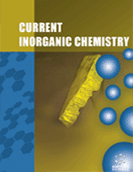Abstract
Following a recently reported synthesis of linearly halide-bridged Cu(II) complexes [Inorg. Chem. 2012, 51, 7966-7968] characterized by strong antiferromagnetic exchange couplings (J), we applied Difference Dedicated Configuration Interaction (DDCI) and Broken-Symmetry Density Functional Theory (BS-DFT) approaches in order to analyze theoretically the trend observed, in which the decreasing electronegativity of the central halide induces an exacerbed magnetic coupling. The importance of the magnetic orbitals in DDCI calculations is acknowledged. The use of reduced molecular models is shown to lead to significant differences in J, in the case of chloride and bromide bridges. Finally, the BS-DFT decomposition of J in its main physical contributions confirms the importance of the kinetic exchange mediated by the halide bridge, but also points towards an increasing core polarization contribution when going from fluoride to bromide.
Keywords: Broken-Symmetry DFT, Difference Dedicated CI, Magnetic exchange coupling.
 8
8

